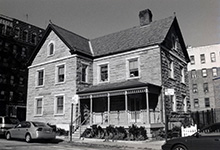
Photo by Janaki Chadha
By JANAKI CHADHA
Vital Stats: 14.6 – Percentage of Fordham residents with diabetes. (Source: New York City Health Department)
Standing in front a crowd of diabetics at North Central Bronx Hospital, instead of speaking on curbing the disease, Dr. Gayotri Goswami took an unusual route and backtracked even before the disease’s onset: pre-diabetes. She spoke on the ignorance of this early stage and the high percentage of pre-diabetics who will develop diabetes in the near future.
“We have a huge support system for diabetics at the hospital, but I don’t think anybody is talking to pre-diabetics,” Goswami told the Norwood News.
A major illness nationwide, diabetes has a significant presence in the Bronx. In honor of World Diabetes Day on Nov. 14, NCBH held an awareness event where physicians, patients and educators gathered to spread the word on care, control, and prevention. Along with speeches, the event included zumba sessions and opportunities for patients to share their stories.
Miriam Junor, a registered nurse who has been a Certified Diabetes Educator for almost eight years, explained the long-term importance of catching the disease early on and teaching patients on how to regulate it. She noted that “educated patients are much more likely to know how to prevent the destruction of their eyes, their heart, their kidneys. And therefore, we don’t have to spend billions of dollars on dialysis, eye exams, amputations, and other destruction caused by the disease.”
Because of the Bronx’s large low-income and minority populations, the borough is particularly affected by diabetes. According to a 2013 report by the New York City Department of Health, Fordham-Bronx Park, the Northeast and the South Bronx were among the city neighborhoods with the highest number of diabetics.
“Patients complain to me all the time when I teach them about the types of food they should eat. They say that those foods are too expensive in the borough,” said Junor. “I tell them, if all you can afford is a head of lettuce for one dollar, get it and fill half the plate with that.”
Carmen Moolah, an NCBH patient, has been a diabetic for 25 years. The disease ran in her family; her father died from it. But it is only recently that she’s heeded the warning on what diabetes can do, thanks to support groups and classes she attends at the hospital. “I have to keep trying,” said Moolah. “I know I have to do more of the work to get it down.”





What is the economic burden of diabetes? Proper management and control could save 49,000 lives and $196 million annually. http://www.healthcaretownhall.com/?p=2699